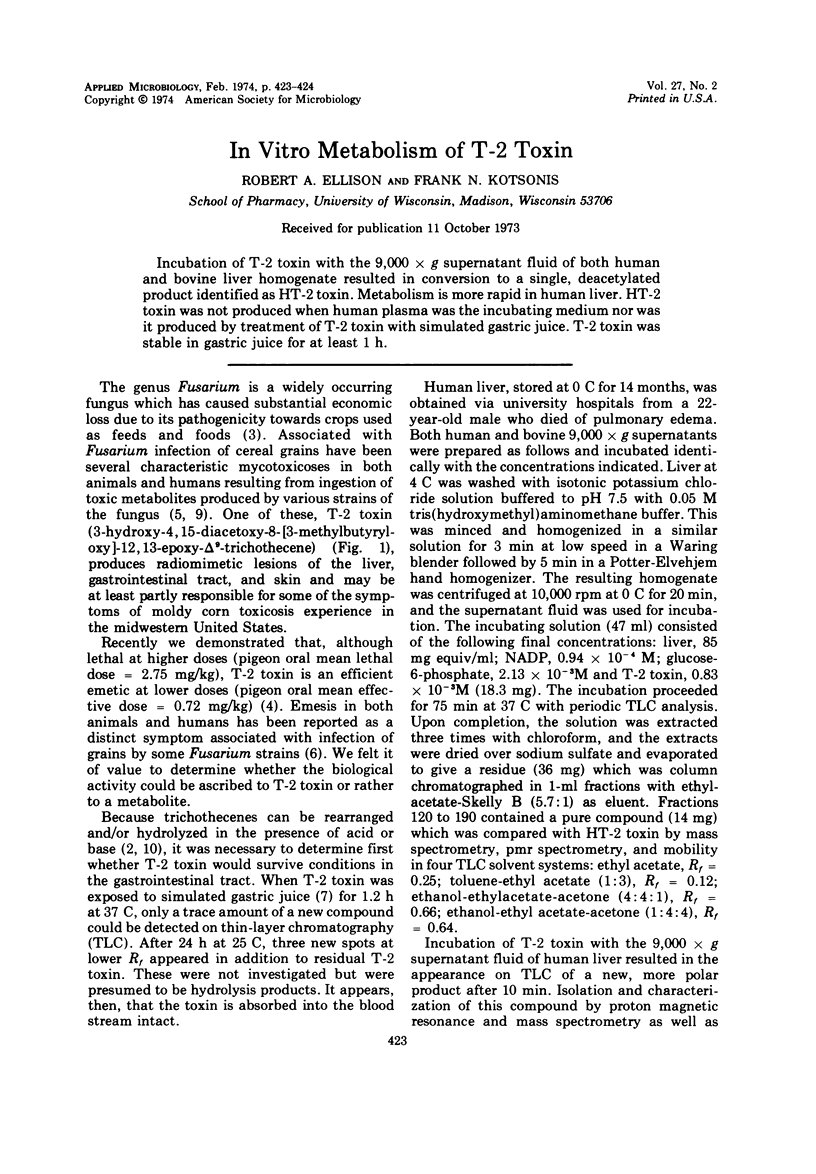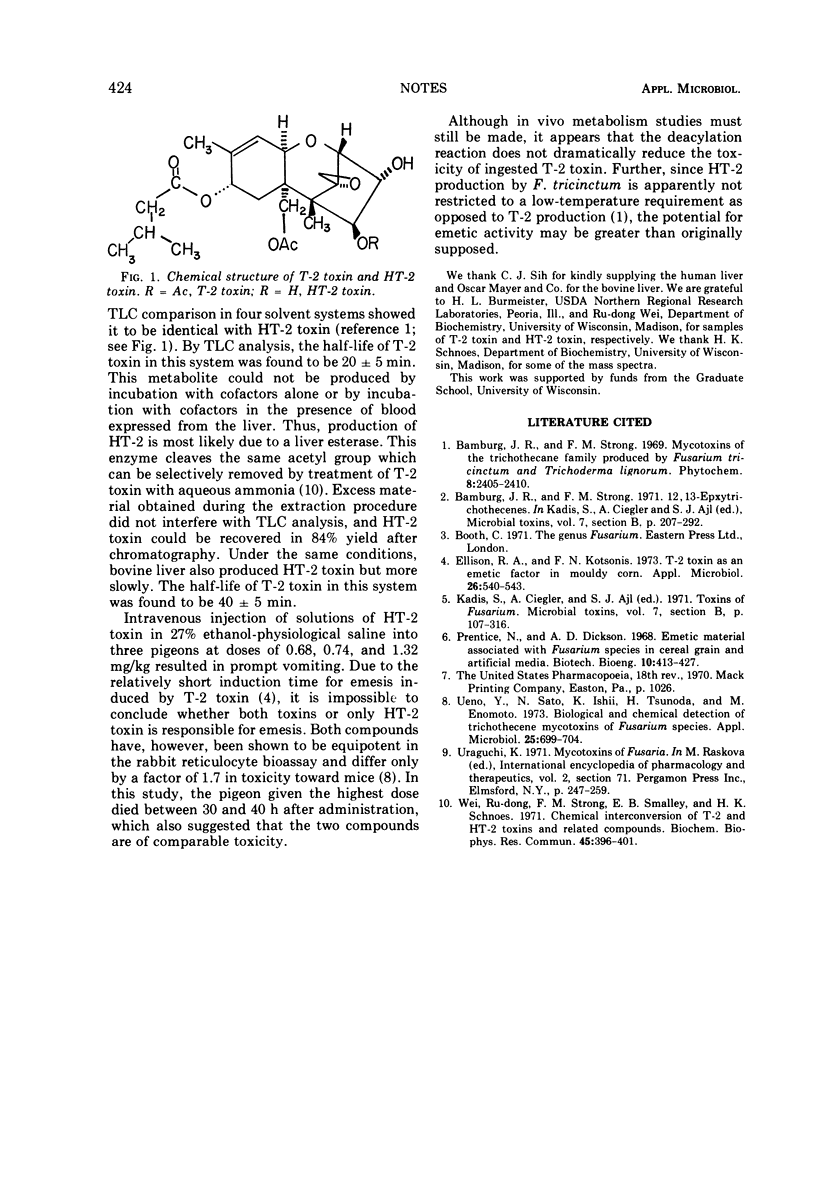Abstract
Incubation of T-2 toxin with the 9,000 × g supernatant fluid of both human and bovine liver homogenate resulted in conversion to a single, deacetylated product identified as HT-2 toxin. Metabolism is more rapid in human liver. HT-2 toxin was not produced when human plasma was the incubating medium nor was it produced by treatment of T-2 toxin with simulated gastric juice. T-2 toxin was stable in gastric juice for at least 1 h.
Full text
PDF

Selected References
These references are in PubMed. This may not be the complete list of references from this article.
- Ellison R. A., Kotsonis F. N. T-2 toxin as an emetic factor in moldy corn. Appl Microbiol. 1973 Oct;26(4):540–543. doi: 10.1128/am.26.4.540-543.1973. [DOI] [PMC free article] [PubMed] [Google Scholar]
- Ueno Y., Sato N., Ishii K., Sakai K., Tsunoda H. Biological and chemical detection of trichothecene mycotoxins of Fusarium species. Appl Microbiol. 1973 Apr;25(4):699–704. doi: 10.1128/am.25.4.699-704.1973. [DOI] [PMC free article] [PubMed] [Google Scholar]
- Wei R., Strong F. M., Smalley E. B., Schnoes H. K. Chemical interconversion of T-2 and HT-2 toxins and related compounds. Biochem Biophys Res Commun. 1971 Oct 15;45(2):396–401. doi: 10.1016/0006-291x(71)90832-1. [DOI] [PubMed] [Google Scholar]


